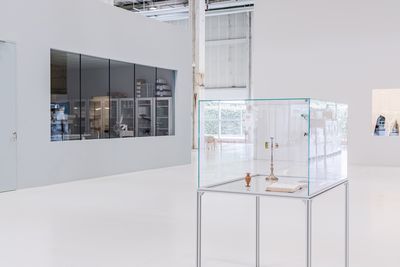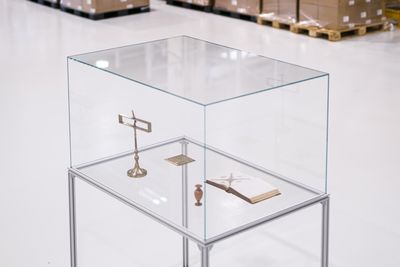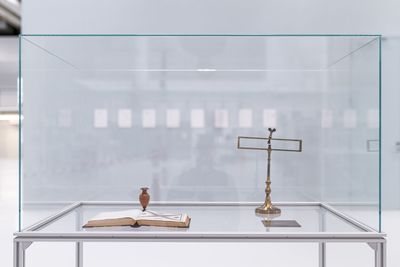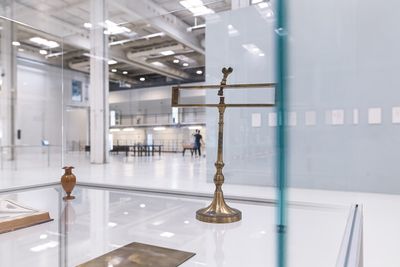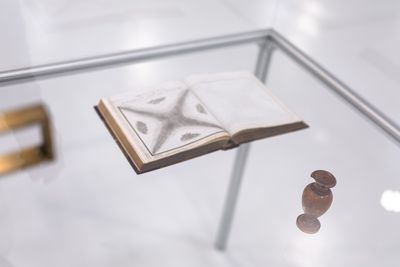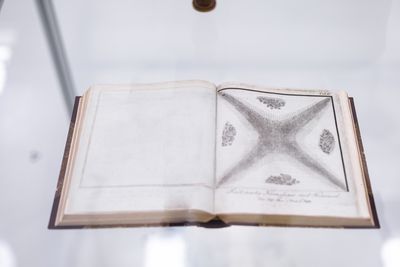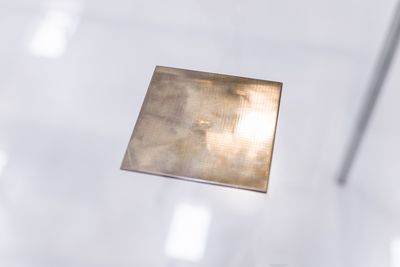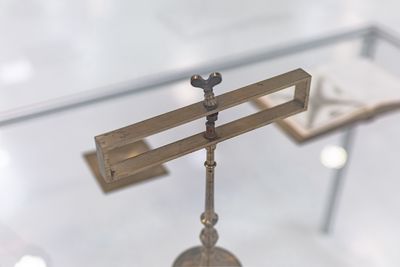H. C. ØrstedChladni Experiments (1800/1810)Scientific instrumentsChladni plates, Chladni figures, book, vessel
Heading
Scientist Ernst Chladni devised a method to study the motions of vibrating plates. He sprinkled a metal plate with a fine powder and set the plate in motion. This procedure resulted in characteristic harmonic patterns of the powder. Hans Christian Ørsted also did experimental work based on the Chladni methodology. He wrote a paper about the findings, meticulously describing his many experiments. In his youth, Ørsted was very influenced by romantic thought and saw a connection between the laws of nature and scientific reason with morale, truth and aesthetics. For Ørsted, all phenomenon were expressions of a unity in nature and, in the paper, he interpreted the sensual experiences and geometrical patterns in the plate experiments as spiritual phenomenon, which allowed the deep reason in nature to talk to us.
Text by Laila Zwisler, Chief consultant, Technology History, at The Technical University of Denmark (DTU).
Biography
Hans Christian Ørsted (14 August 1777 – 9 March 1851) was a Danish physicist and chemist who discovered that electric currents create magnetic fields, which was the first connection found between electricity and magnetism. Oersted's law and the oersted (Oe) are named after him. He was an important driving force in establishing the Polytechnical Institute of Copenhagen University in 1829, now known as The Technical University of Denmark (DTU).
